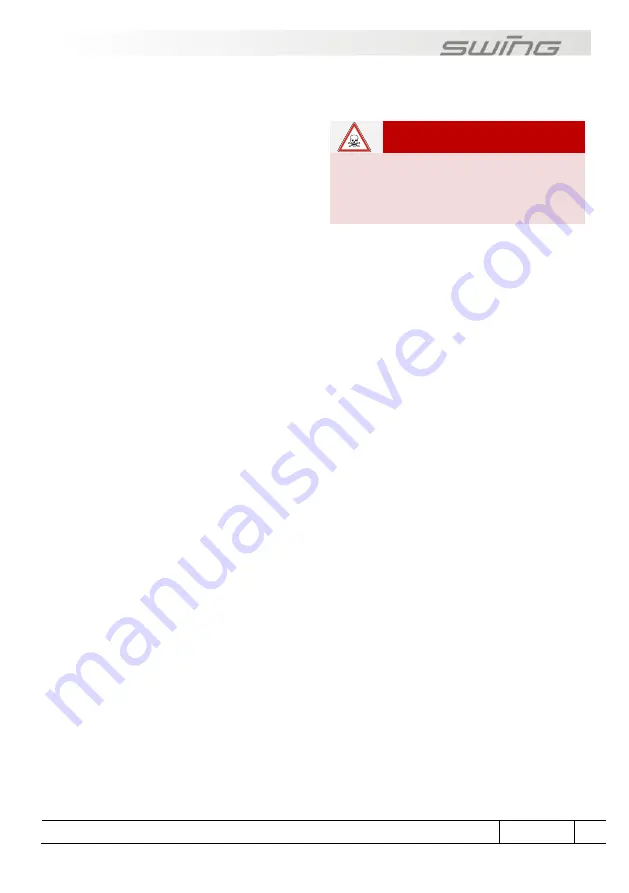
Setting up the Core 3 and test-flying
Section 4
21
Certified Harnesses
The Core 3 can be used with any harness
which has
“GH” classification. There is more
information about this on the licensing body
websites (refer to Appendix).
Be aware when choosing a harness that the
height of the attachment point affects flight
behaviour. The lower the attachment point,
the more agile the paraglider. The harness
should also ensure that you can apply the
maximum acceleration distance using the
pulleys.
Be aware too that the relative braking
distance can also alter with the height of the
attachment point. Please contact Swing or
your Swing dealer if you have any questions
about using your harness with the Core 3.
Reclined harnesses
Reclined harnesses are generally
completely enclosed and often have a very
low main attachment point. Active flying is
very different with them than with an upright
harness. To achieve the same level of
efficiency and safety in flight with a reclined
harness which you are accustomed to with
an upright harness, you must systematically
learn the appropriate techniques and gain a
good deal of experience.
If any problems or disturbances are
encountered when flying with a reclined
harness, the pilot must immediately assume
an upright seating position. Extreme flight
manoeuvres flown in a reclined position
drastically increase the risk of twist. In
addition, pilots often underestimate the
reduction in control travel caused by flying
an extreme flight manoeuvre.
There is an increased risk of twist when
using a reclined harness if a large section of
the canopy collapses. If there is an
asymmetric collapse and the pilot tips
sideways, the resulting twist around the
vertical axis with a poorly positioned
harness leads to a reduction in control
travel. This quickly causes an unintended
stall on the open side.
WARNING
If using a reclined harness, be sure to
practise in particular how to shift into an
upright position so as to minimise the
risk of twist.
Reserve
It is a mandatory requirement to carry an
approved reserve for use in emergency
situations where the paraglider fails and
recovery is not possible, for example after
colliding with another aerial sports craft.
In choosing a reserve, you should be careful
that you remain within the specified take-off
weight. The reserve is fitted according to the
manufacturer’s instructions.
Recommended weight range
The Core 3 must be flown within the
permitted weight range, which is given in the
Maintenance and Service book. The weight
refers to take-off weight: pilot, incl. clothing,
glider, harness and equipment. Determine
your take-off weight by weighing yourself
with all of your equipment and your
backpack.
Swing offers the Core 3 in various sizes. If
you are choosing between two sizes, your
personal flying preferences will determine
which glider to choose.
If you prefer very dynamic flight behaviour
with fast reactions and without hesitation,
you should choose a high wing-loading, i.e.
the smaller model.
The dynamics reduce in the medium and
lower weight range. Flight behaviour
becomes more straightforward and many
pilots select this weight range because they
find it easier to centre in thermals. If these














































